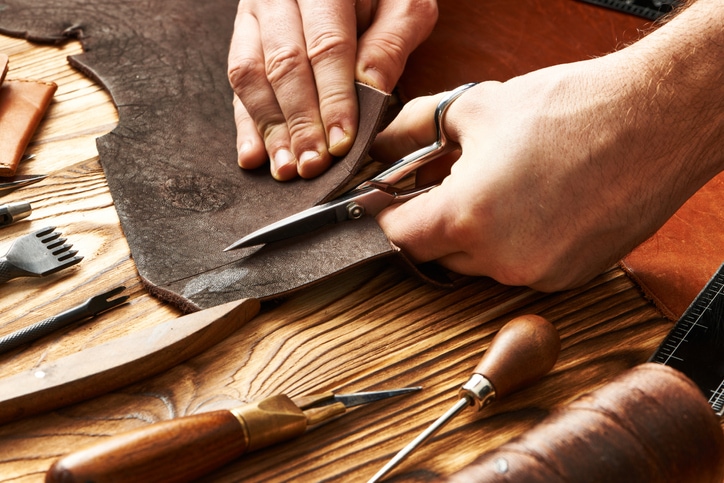Clothes are made through a process that involves ginning the cotton fibers, bleaching, dyeing, and packaging them for delivery. Garments are then steam cleaned, undergo direct to garment printing and embroidery, and are overseen by garment technologists.
Quality, safety, and strength tests are performed before the garments are printed, sewn, checked, tested, and packaged by hand in a factory. Whether it’s a t-shirt or a dress, the process of how clothes are made is a fascinating one.
From sourcing the materials to the final product, every step is crucial in creating a well-made garment. We will explore the various stages of garment production, including cotton ginning, fabric processing, dyeing, printing, and sewing. We will also delve into the role of garment technologists and the stringent quality control measures that ensure the end product meets the highest standards. Join us as we unravel the intricate process of how clothes are made in factories.
The Production Process
The production process of clothes begins with ginning, which separates cotton fibers and seeds. The cotton is then cleaned, bleached, dyed, and packaged for delivery. Garment technologists oversee every stage, ensuring quality and safety. In factories, yarn is manufactured, fabric processed, garments stitched, and the final products packed and shipped.
Traditional materials like cotton and linen are used, but many clothes are made from fossil fuel-based materials and chemicals.
| The Production Process |
|---|
| Ginning and Cleaning |
| A ginning unit separates the cotton fibers and seeds from cotton. This process removes impurities and results in a clean cotton sliver. |
| Fabric Processing |
| Fabric goes through various stages of wet processing, including bleaching and dyeing, to achieve the desired color and texture. |
| Dyeing and Printing |
| The fabric is dyed and printed using computer programs and techniques like direct-to-garment printing. This step adds color and patterns to the fabric. |
| Garment Manufacturing |
| Garment technologists oversee the entire production process, from design to manufacture. Each garment is meticulously sewn, checked for quality, and tested. |
| Quality Control and Packaging |
| All garments undergo stringent quality, safety, and strength tests. They are then packaged by hand before being sent out for delivery. |

Credit: classful.com
Materials Used
When it comes to the materials used in making clothes, there are several key components to consider. Cotton, a natural fiber derived from the cotton plant, is widely used in clothing production due to its breathability and softness. Leather, obtained from animal hides, is prized for its durability and luxurious feel, often used in footwear and accessories. Wool is another natural fiber, derived from the fleece of sheep, known for its warmth and insulating properties. Silk is a lustrous and delicate fabric obtained from the cocoons of silk-producing worms, prized for its luxurious texture. Flax is used to make linen, a strong and versatile fabric that is valued for its natural luster and coolness.
Textile Industry
The textile industry involves the process of making clothes. From ginning unit to fabric processing, dyeing, printing, sewing, and packaging, various steps are taken to ensure the production of high-quality garments. The industry also utilizes advanced technology and computer programs for direct to garment printing and embroidery, while garment technologists oversee every stage of production.
Desigual, for example, rigorously tests its products for quality, safety, and strength before packaging and delivering them.
Overview Of Textile Industry
The textile industry plays a vital role in the manufacturing of clothes. It encompasses two main sectors: textile manufacturing and clothing industry.
In textile manufacturing, the process starts with ginning, where cotton fibers and seeds are separated. This is followed by the removal of impurities, resulting in clean lint called a sliver. The sliver is then bleached, dyed, and packaged for delivery. Additionally, the garment material is steam cleaned and color-cured using specialized equipment. Direct to garment printing and embroidery are also employed through computer programs. Garment technologists oversee every stage of garment production, ensuring quality and safety.
On the other hand, the clothing industry involves various processes such as yarn manufacturing, fabric processing, dyeing, printing, stitching, and packing. Each step contributes to the final product’s creation, with meticulous attention given to design, pattern making, sourcing materials, and quality control.
Overall, the textile industry and the clothing industry work hand in hand to bring clothes from raw materials to finished products. The manufacturing process involves multiple stages that prioritize quality, innovation, and efficiency.

Credit: classful.com
Step-by-step Guide To Garment Production
Here’s a step-by-step guide to garment production:
Pre-Production: This phase consists of several important steps:
- Fabric and Trim Sourcing
- Pattern Making
Fabric and Trim Sourcing: In this step, the necessary fabrics and trims are sourced for the garment production.
Pattern Making: The patterns are created based on the design specifications for the garment.
Cutting Process: Once the patterns are ready, the fabrics and trims are cut according to the pattern.
Manufacturing and Quality Control: The cut fabrics and trims are then assembled and stitched together to create the garment. Throughout the manufacturing process, strict quality control measures are implemented to ensure that the final product meets the desired standards.
Delivery: After the manufacturing and quality control process is complete, the finished garments are packaged and prepared for delivery.
Overall, garment production involves various stages, from pre-production to manufacturing and quality control, all culminating in the final delivery of the product.
Sustainable Production Practices
Clothes are made through various stages of production. Design and pattern making involves creating the blueprint for the garment. The cutting stage involves the precise cutting of fabric according to the pattern. Sewing is the process of joining the cut pieces together to form the garment. Finishing involves adding final touches and ensuring the garment is ready for use. Quality control ensures that the garment meets required standards. Finally, packaging and labeling are essential for brand presentation. Transportation ensures the products reach consumers efficiently.
.jpg)
Credit: www.innovationintextiles.com
Frequently Asked Questions Of How Is Clothes Made
How Clothes Are Made Step By Step?
Clothes are made step by step through processes like fabric and trim sourcing, pattern making, cutting, sewing, quality control, and packaging for delivery. Raw materials include cotton, wool, silk, and synthetic fibers derived from crude oil. The entire garment production process involves precision and attention to detail.
How Do They Manufacture Clothes?
Clothes are manufactured through a step-by-step process. It starts with designing and pattern making, followed by sourcing and purchasing materials. Then, fabric spreading and cutting, sewing and assembly, quality control and inspection take place. Afterwards, pressing and finishing are done, and pre-shipping inspection is conducted.
Finally, the clothes are packaged and shipped.
Where Are Clothes Made From?
Clothes are made from a variety of materials, including cotton, linen, leather, and synthetic fibers derived from crude oil. The production process involves steps such as ginning, fabric processing, dyeing, printing, sewing, and quality control. Garment technologists oversee the entire production process from design to manufacture.
How Should Clothes Be Produced?
Clothes should be produced through careful design, pattern-making, and cutting. Additionally, fabric and trim sourcing, production planning, sewing, and quality control are essential steps. Garment technologists oversee the entire production process to ensure stringent quality and safety standards. The final products are meticulously checked, tested, and packaged for delivery.
How Are Clothes Made In Factories?
Clothes are made in factories through a series of processes like fabric sourcing, pattern making, cutting, sewing, quality control, and packaging.
Conclusion
In the fascinating world of clothing production, understanding the intricate steps involved can truly deepen our appreciation for the garments we wear. From the initial stages of fabric and trim sourcing to the meticulous processes of sewing and assembly, the journey of clothing creation is a symphony of art and craftsmanship.
Delving into the rich tapestry of garment production, we gain a newfound respect for the skill and dedication embedded in every thread of clothing that adorns our bodies.


